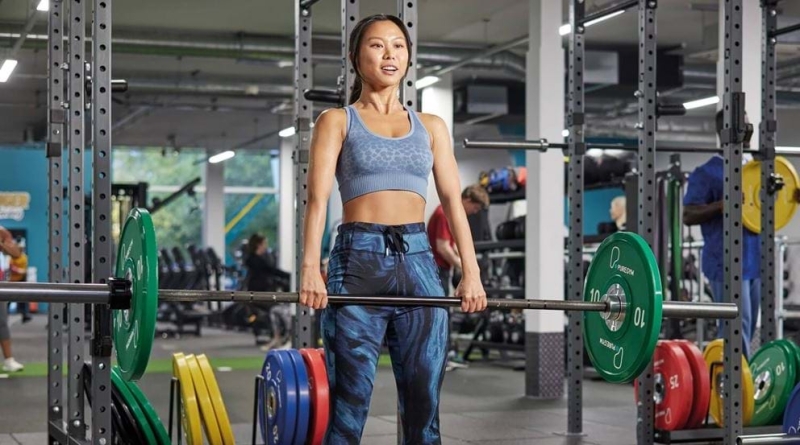Contents
- 1 What Is Strength And Conditioning?
- 2 What Is the Difference Between Strength And Conditioning And Strength Training?
- 3 What Are The Benefits Of Strength And Conditioning?
- 4 What Should A Strength And Conditioning Workout Programme Include?
- 5 Example Full Body Strength And Conditioning Workout
- 6 How Often Should You Do Strength And Conditioning Workouts?
Most people have heard the gym phrase ‘strength and conditioning’, but what does it actually mean?
In this blog, Personal Trainer and Strength and Conditioning Specialist Flyn Woodward explains everything you need to know about strength and conditioning, from benefits to programming. Plus, he’s shared a free strength and conditioning plan to try.
What Is Strength And Conditioning?
Strength and conditioning workouts are a style of training that selects exercises to improve athletic performance and reduce the risk of injury. As the name suggests, there are two elements to a strength and conditioning routine:
- Strength training: Strength training exercises aimed to improve strength and power, for example squats or bench press.
- Exercises and drills that prepare the body for specific demands of a sport, for example jumps, sprints, or agility work.
A good strength and conditioning programme is aimed at improving specific areas within a sport or activity, not just increasing overall fitness. A strength and conditioning workout will look very different depending on the discipline it’s for, and even within a sport it can vary – for example a long distance runner and a sprinter would both have different goals and exercises.
What Is the Difference Between Strength And Conditioning And Strength Training?
Strength training is a type of training that focuses on increasing full body strength by challenging the muscles through various exercises.
Strength and conditioning is specifically aimed at boosting performance in a sport or activity, so training is tailored to focus on elements that will benefit an athlete’s sport. Strength and conditioning programmes will contain strength training, but there is usually other elements that help with sport specific requirements like running faster, jumping higher, and making quick turns.
What Are The Benefits Of Strength And Conditioning?
Athletes benefit from strength and conditioning as it helps to improve their sports performance, but you don’t need to be an athlete to benefit from this style of training.
Strength and conditioning helps to increase strength, power, speed, endurance and overall fitness, and can help anyone to become more athletic. It also helps to reduce the risk of sports and training related injuries.
What Should A Strength And Conditioning Workout Programme Include?
A good strength and conditioning workout programme will be tailored to your unique goals, but most will contain the following types of strength and conditioning exercises:
- Speed work such as sprint workouts
- Power movements like jumps and plyometrics
- Heavy strength work, usually focused on compound lifts
- High volume weightlifting to build muscle and endurance
Strength and conditioning needs to be planned around your sport specific training so that you get enough recovery ahead of training and competitions. Periodisation and utilising busy and quiet parts of a season is essential to allowing athletes to train while still being recovered for their sports.
Example Full Body Strength And Conditioning Workout
This workout is a good way to start if you’re interested in strength and conditioning but don’t have specific sports goals. For a more tailored workout, consider working with a strength and conditioning coach like Flyn.
-
Sled push sprints – 5 x 20m
Sled push sprint intervals train both power and speed. Load the sled with an easy to moderate weight and push the sled as fast as you can for the intervals.
-
Hex bar jumps – 4 x 2 reps
Hex or trap bar jumps are a plyometric exercise that builds explosiveness and power. Start in a deadlift position, but explosively jump up with as much height as possible while holding the hex bar. Land with soft knees and allow the weight to pull the bar back down to the floor.
-
Barbell back squats – 4 x 4 reps
Barbell back squats are great for building lower body strength, especially when doing low reps with heavy weights. Make sure to brace your core and aim to get your thighs at least parallel with the floor.
-
Hamstring curls – 3 x 12 reps
Isometric exercises like hamstring curls build muscular strength and endurance, and can strengthen tendons too. Use a full range of motion and slow down the eccentric portion of the exercise to ensure the hamstrings are working hard.
-
Bench press and pull ups super set – 5 x 10/8 reps
This is a superset exercise, which means you will perform the pull ups immediately after the bench press before taking a rest. Supersets can be a time efficient way to work more muscle groups, and when working opposite muscle groups like push and pull muscles here, it doesn’t have a negative impact on either exercise.
How Often Should You Do Strength And Conditioning Workouts?
The most important thing to consider when planning your strength and conditioning programme is your sport specific training. Making sure that you have enough recovery for every training session, match or competition will allow you to improve your sports performance over time without impacting it in the short term.
During off season periods, you’ll be able to increase your strength and conditioning as sports specific training reduces. During busy periods, reduce the number of workouts and consider spreading different exercises across the week.
For more sports focused training advice, check out our blogs on improving sports performance here. To get started with your training, find your nearest gym here.

